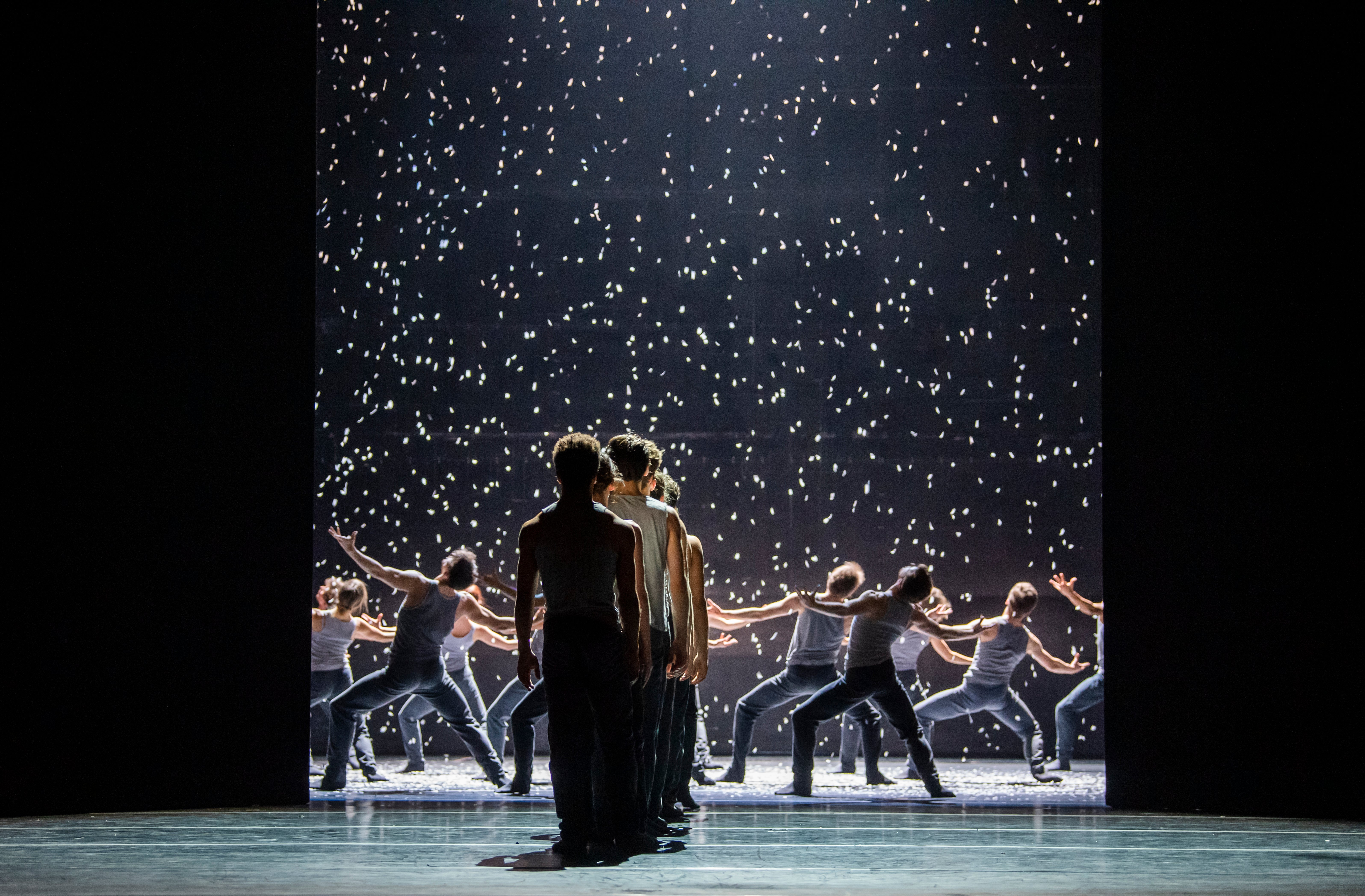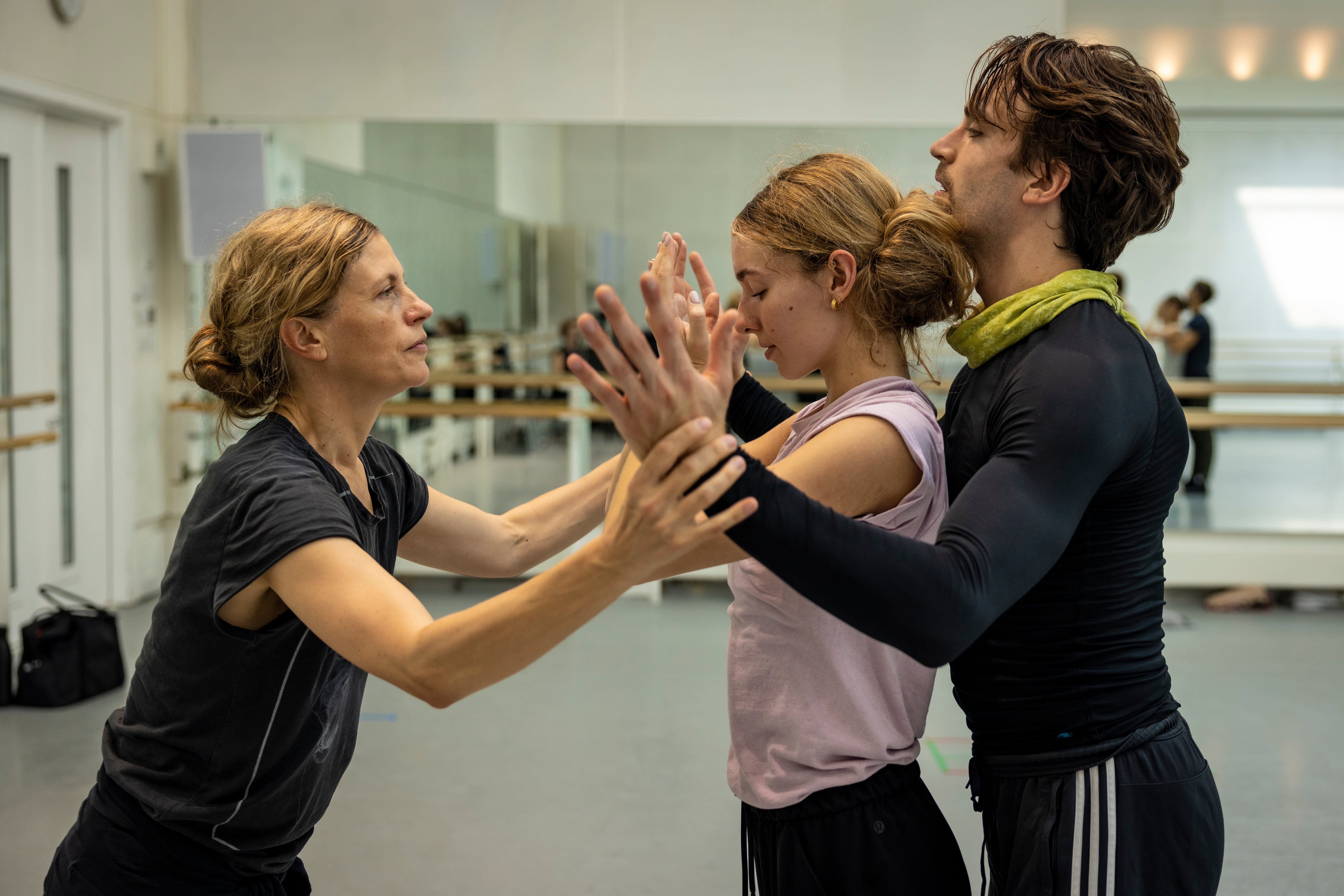Crystal Pite: ‘There’s a profound optimism in gathering together and creating something’
The refugee crisis of 2015 inspired Canadian choreographer Crystal Pite to create her groundbreaking, award-winning short ballet ‘Flight Pattern’. She talks to Kat Lister about turning it into a full-length show, and how art can respond to difficult world events

It was 2015 and Crystal Pite was supposed to be working on a ballet. But every time the Canadian choreographer sat down to think about it, she ended up watching the news, consumed by its daily horrors. In December of that year, the UN Refugee Agency estimated that more than 911,000 refugees and migrants had arrived in Europe over the previous 12 months. They also tallied that approximately 3,550 lives had been lost on the journey from Syria, Afghanistan and Iraq via land and sea. Fences were constructed, borders reinstated. Meanwhile, the headlines roared and our television screens flickered.
“I just couldn’t stop thinking about it,” the Canadian choreographer says softly on a Zoom call from her home in Vancouver. Pite’s gaze is momentarily distracted by a possible commotion happening just outside her office window. “Our cat is sometimes bullied and I just heard a little scream,” she explains, before exclaiming, louder this time, “Oh look, there he is!” She jumps to her feet and briefly disappears from view. It’s an interruption that seems to encapsulate the essence not only of Pite as a cat owner, but as a choreographer, too. Porous to the world around her, it is this kind of attentiveness that drives her work and specifically drew her towards her career-defining composition – a one-act contemporary ballet that premiered at the Royal Opera House in 2017.
Sitting down to make a piece of art separate from what was happening outside her office window seemed to be an inadequate response – and an impossible task. What resulted from this creative conflict was a short ballet that she called Flight Pattern, set to the first movement of Henryk Górecki’s Symphony No 3, and directly engaging with a humanitarian crisis few of us watching could comprehend. Hopes were high – and the choreography delivered. Not many theatre-goers, myself included, could deny its raw emotionality, the deeply affecting sight of a diverse group of rippling dancers moving as one.
Flight Pattern received rave reviews, and, in 2018, won the Laurence Olivier Award for Best New Dance Production. It also sparked questions about the future of the Royal Ballet itself. “Should the company be staging work whose style is so far removed from classical ballet?” one Guardian critic asked. Arguably, it is this separation that gives Pite’s work on the main stage of a classical venue such as the Royal Opera House such breathtaking power. Having choreographed more than 50 works for an array of world-renowned companies (the Nederlands Dans Theatre I and the Paris Opera Ballet are just two examples) Pite is quick to point out that she doesn’t know a lot about the ballet world, nor does she watch the major ballet companies regularly, a freewheeling quality that gives her a sense of freedom “to make the things I want to make, and ask the questions I want to ask”.
Five years since her large-scale ensemble premiered at the Royal Opera House to critical acclaim, Flight Pattern is set to return as part of a new triptych, a full-length work entitled Light of Passage, building on the original ballet’s themes of dislocation and loss, and exploring further questions of agency and passage in an imperfect world. When Pite finished creating Flight Pattern in 2017, Kevin O’Hare, director of The Royal Ballet, immediately asked her if she’d like to choreograph more shows for the company. “Instead of creating a whole new world, why not continue in the one we’d started to build?” came her reply. Thinking more about the work, she began to wonder: “What’s it like to come up to a border or be held in a camp or come to a crossing and be held in the in-between where you’ve left the past and it’s clinging to you?” She suggested choreographing the remaining two movements of Górecki’s Third Symphony, a mournful 55-minute work that Pite calls a lament, a “perfect container” for a three-part ballet that is all about displacement and transition, the open archway and the closed door.
Despite her compassion for the plight of refugees, Pite is clear that she does not consider herself an activist – “but I do try to find ways of delivering content that speaks to what I’m worrying about or what I care about or what I’m fascinated by”. Confronting questions such as these collectively and artistically is, Pite believes, an alternative way to cope with current events. “I think that there is a profound optimism in gathering together as human beings and creating something,” she explains.

A week later, I can see this gathering first-hand. Pite is standing on a chair, in a light-filled rehearsal space at the Royal Opera House, her tracksuit bottoms tucked into her socks. The choreographer is surveying an undulating sea of taut bodies rocking from side to side. “That’s beautiful, Josh, way to go,” she calls out encouragingly to one of the Royal Ballet dancers, a singular torso in an oscillating shoal of legs and arms; twisting and turning, reaching and diving, all right angles and curves. Watching Pite’s murmurations take shape, one can’t help but feel affected by them in a deeply intimate way, a kind of osmosis that is only intensified by her choice of devotional music, Górecki’s most popular work, also known as the Symphony of Sorrowful Songs.
What is the ultimate border crossing for a human being? It’s the transformation from life to death
Górecki’s profound meditation on motherhood, love and loss – composed in Katowice, Poland, in 1976 – achingly reflects Pite’s own themes, particularly in the second part of her opus, a dance she has called Covenant, a title that alludes to the promise of something, a pledge. Pite started reading the UN Convention on the Rights of the Child and it moved her to create something in its image. “Of course, there’s an underlying sadness that they have to be written down at all,” she says. “But I wanted to see if I could translate the promise of that document into choreography to see how that might take shape in the body.” Górecki’s music shapes the dancers, too. His nine-minute second movement – a soaring and plunging requiem, seeped in loss and grief, equal parts despair and hope – contains a libretto inspired by the graffiti of 18-year-old Helena Błażusiakówna who, in 1944, was arrested by Nazis, and scratched a short prayer to the Virgin Mary into her prison cell wall.

Pite wanted to use this second dance movement to ruminate on the image of Mary and all the mothers, all the caregivers, that take on the role of protecting children. Six so-called “junior associates”, aged between 9 and 11, feature in the work alongside 18 company dancers whose bodily framework will form the corridors and roads that “the kids travel through and inhabit and climb on.” Such innovative choreography isn’t always easy to pull off, but Pite seems to court these kinds of challenges because “it’s a living, breathing form, just by its nature. I’m responding to what I see in the studio and trying to keep my ears and eyes open as much as possible.”
As for the third and final movement Passage? She decided to try something new. “I wanted to zoom out even further into the threshold of end of life,” she says. As with all of Pite’s work it is our collective uncertainty, what she calls “the not-knowing”, that draws her to create such psychologically rich work. As she says, “What is the ultimate border crossing for a human being? It’s the transformation from life to death.” Led by this profound question, Passage is perhaps her most probing yet, venturing into what Pite calls “the immeasurable distance between the departed and the bereaved.” To see Royal Ballet dancers put such vibrant movement to this ebbing narrative – “in defiance of it”, she says – acts as a counterpoint. That’s where the hope lies. “That we live and we love,” she says smiling. And – in spite of it all – “we dance anyway”.
‘Lights of Passage’ is at the Royal Opera House from 18 October to 3 November



Join our commenting forum
Join thought-provoking conversations, follow other Independent readers and see their replies
Comments